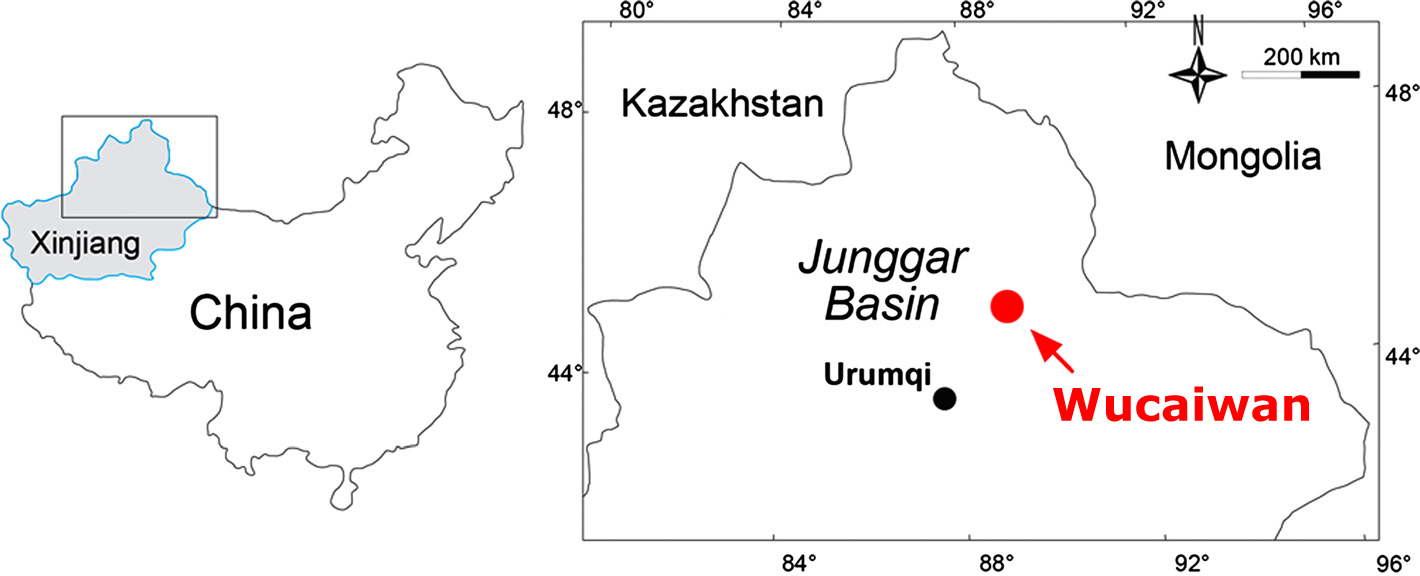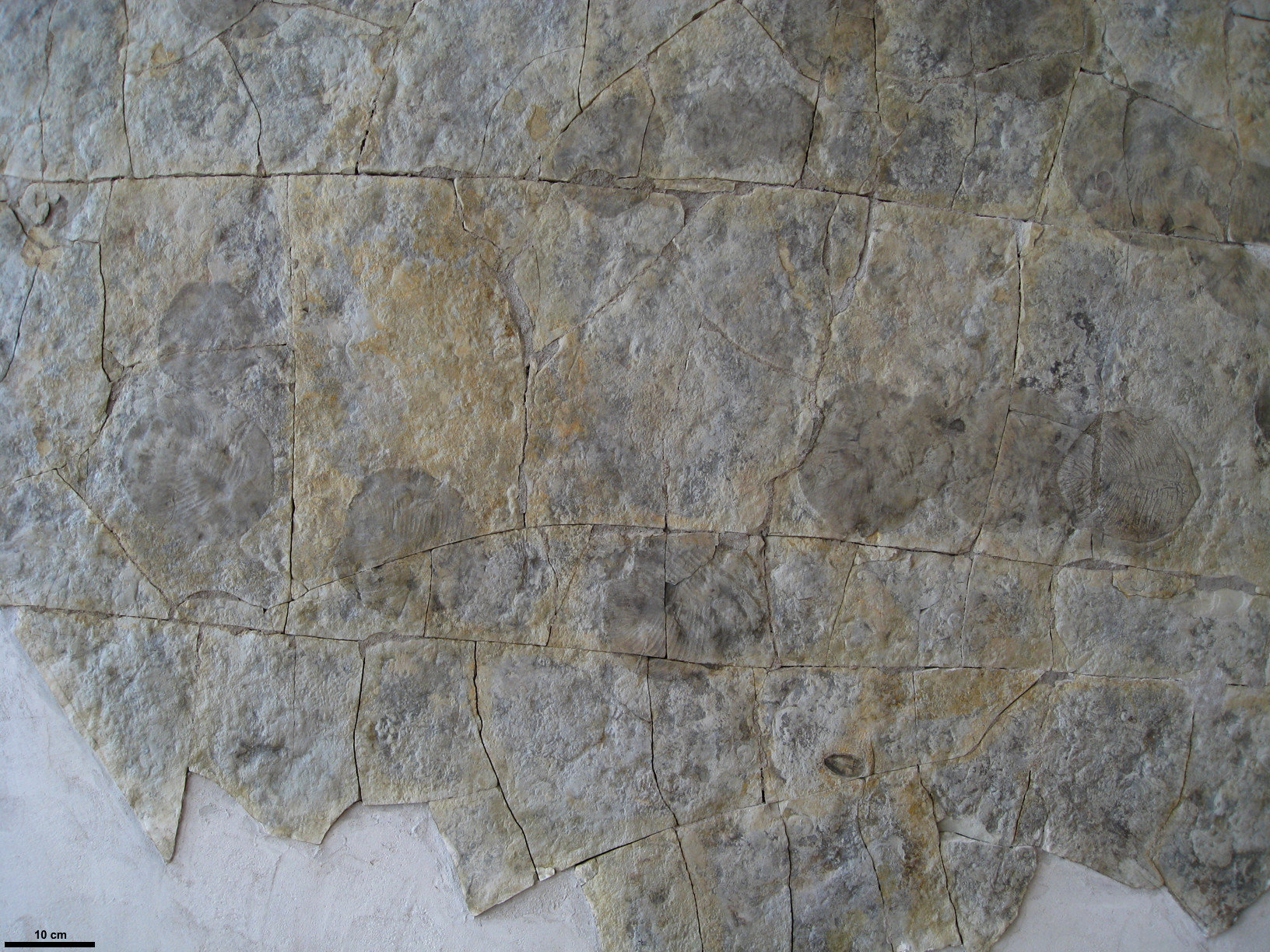|
Limusaurus Inextricabilis
''Limusaurus'' is a genus of theropod dinosaur that lived in what is now China during the Late Jurassic, around 161 to 157 million years ago. The type and only species ''Limusaurus inextricabilis'' was described in 2009 from specimens found in the Upper Shishugou Formation in the Junggar Basin of China. The genus name consists of the Latin words for "mud" and "lizard", and the species name means "impossible to extricate", both referring to these specimens possibly dying after being mired. ''Limusaurus'' was a small, slender animal, about in length and in weight, which had a long neck and legs but very small forelimbs (with reduced first and fourth fingers). It underwent a drastic morphological transformation as it aged: while juveniles were toothed, these teeth were completely lost and replaced by a beak with age. Several of these features were convergently similar to the later ornithomimid theropods as well as the earlier non-dinosaurian shuvosaurids. ''Limusauru ... [...More Info...] [...Related Items...] OR: [Wikipedia] [Google] [Baidu] |
Oxfordian (stage)
The Oxfordian is, in the ICS' geologic timescale, the earliest age of the Late Jurassic Epoch, or the lowest stage of the Upper Jurassic Series. It spans the time between 163.5 ± 1.0 Ma and 157.3 ± 1.0 Ma (million years ago). The Oxfordian is preceded by the Callovian and is followed by the Kimmeridgian. Stratigraphic definitions The Oxfordian Stage was called "Clunch Clay and Shale" by William Smith (1815–1816); in 1818 W. Buckland described them under the unwieldy title "Oxford, Forest or Fen Clay". The term Oxfordian was introduced by Alcide d'Orbigny in 1844. The name is derived from the English city of Oxford, where the beds are well developed, but they crop out almost continuously from Dorset to the coast of Yorkshire, generally forming low, broad valleys. They are well exposed at Weymouth, Oxford, Bedford, Peterborough, and in the cliffs at Scarborough, Red Cliff and Gristhorpe Bay. Rocks of this age are found also in Uig and Skye. The base of the Oxfordian Stage ... [...More Info...] [...Related Items...] OR: [Wikipedia] [Google] [Baidu] |
Ceratosaur
Ceratosaurs are members of the clade Ceratosauria, a group of dinosaurs defined as all theropods sharing a more recent common ancestor with ''Ceratosaurus'' than with birds. The oldest known ceratosaur, ''Saltriovenator'', dates to the earliest part of the Jurassic, around 199 million years ago. According to the majority of the latest research, Ceratosauria includes three major clades: Ceratosauridae, Noasauridae, and Abelisauridae, found primarily (though not exclusively) in the Southern Hemisphere. Originally, Ceratosauria included the above dinosaurs plus the Late Triassic to Early Jurassic Coelophysoidea and Dilophosauridae, implying a much earlier divergence of ceratosaurs from other theropods. However, most recent studies have shown that coelophysoids and dilophosaurids do not form a natural group with other ceratosaurs, and are excluded from this group. Ceratosauria derives its names from the type species, ''Ceratosaurus nasicornis'', described by O.C. Marsh in 1884. A ... [...More Info...] [...Related Items...] OR: [Wikipedia] [Google] [Baidu] |
Bone Beds
A bone bed is any geological stratum or deposit that contains bones of whatever kind. Inevitably, such deposits are sedimentary in nature. Not a formal term, it tends to be used more to describe especially dense collections such as Lagerstätte. It is also applied to brecciated and stalagmitic deposits on the floor of caves, which frequently contain osseous remains. In a more restricted sense, the term is used to describe certain thin layers of bony fragments, which occur in well-defined geological strata. One of the best-known of these is the Ludlow Bone Bed, which is found at the base of the Downton Sandstone in the Upper Ludlow series. At Ludlow (England) itself, two such beds are actually known, separated by about . of strata. Although quite thin, the Ludlow Bone Bed can be followed from that town into Gloucestershire, for a distance of . It is almost completely made up of fragments of spines, teeth and scales of ganoid fish. Another well-known bed, formerly known as the ... [...More Info...] [...Related Items...] OR: [Wikipedia] [Google] [Baidu] |
Xinjiang
Xinjiang, SASM/GNC: ''Xinjang''; zh, c=, p=Xīnjiāng; formerly romanized as Sinkiang (, ), officially the Xinjiang Uygur Autonomous Region (XUAR), is an autonomous region of the People's Republic of China (PRC), located in the northwest of the country at the crossroads of Central Asia and East Asia. Being the largest province-level division of China by area and the 8th-largest country subdivision in the world, Xinjiang spans over and has about 25 million inhabitants. Xinjiang borders the countries of Mongolia, Russia, Kazakhstan, Kyrgyzstan, Tajikistan, Afghanistan, Pakistan and India. The rugged Karakoram, Kunlun and Tian Shan mountain ranges occupy much of Xinjiang's borders, as well as its western and southern regions. The Aksai Chin and Trans-Karakoram Tract regions, both administered by China, are claimed by India. Xinjiang also borders the Tibet Autonomous Region and the provinces of Gansu and Qinghai. The most well-known route of the historic Silk Ro ... [...More Info...] [...Related Items...] OR: [Wikipedia] [Google] [Baidu] |
Dzungaria
Dzungaria (; from the Mongolian language, Mongolian words , meaning 'left hand') is a geographical subregion in Northwest China that corresponds to the northern half of Xinjiang. It is thus also known as Beijiang, which means "Northern Xinjiang". Bounded by the Altai Mountains to the north and the Tian Shan mountain range to the south, Dzungaria covers approximately , and borders Kazakhstan to the west and Mongolia to the east. In contexts prior to the mid-18th century Dzungar genocide, the term "Dzungaria" could cover a wider area, conterminous with the Oirats, Oirat-led Dzungar Khanate. Although Dzungaria is geographically, historically, and ethnically distinct from the Tarim Basin (or Nanjiang, ), the Manchu people, Manchu-led Qing dynasty integrated both areas into one province, Xinjiang. Dzungaria is Xinjiang's center of heavy industry, generates most of the region's GDP, and houses its political capital Ürümqi (Oirat language, Oirat for 'beautiful pasture'). As such, Dzun ... [...More Info...] [...Related Items...] OR: [Wikipedia] [Google] [Baidu] |
Sauropod
Sauropoda (), whose members are known as sauropods (; from '' sauro-'' + '' -pod'', 'lizard-footed'), is a clade of saurischian ('lizard-hipped') dinosaurs. Sauropods had very long necks, long tails, small heads (relative to the rest of their body), and four thick, pillar-like legs. They are notable for the enormous sizes attained by some species, and the group includes the largest animals to have ever lived on land. Well-known genera include ''Brachiosaurus'', ''Diplodocus'', ''Apatosaurus'' and ''Brontosaurus''. The oldest known unequivocal sauropod dinosaurs are known from the Early Jurassic. ''Isanosaurus'' and ''Antetonitrus'' were originally described as Triassic sauropods, but their age, and in the case of ''Antetonitrus'' also its sauropod status, were subsequently questioned. Sauropod-like sauropodomorph tracks from the Fleming Fjord Formation (Greenland) might, however, indicate the occurrence of the group in the Late Triassic. By the Late Jurassic (150 million yea ... [...More Info...] [...Related Items...] OR: [Wikipedia] [Google] [Baidu] |
Ichnite
A fossil track or ichnite (Greek "''ιχνιον''" (''ichnion'') – a track, trace or footstep) is a fossilized footprint. This is a type of trace fossil. A fossil trackway is a sequence of fossil tracks left by a single organism. Over the years, many ichnites have been found, around the world, giving important clues about the behaviour (and foot structure and stride) of the animals that made them. For instance, multiple ichnites of a single species, close together, suggest 'herd' or 'pack' behaviour of that species. Combinations of footprints of different species provide clues about the interactions of those species. Even a set of footprints of a single animal gives important clues, as to whether it was bipedal or quadrupedal. In this way, it has been suggested that some pterosaurs, when on the ground, used their forelimbs in an unexpected quadrupedal action. Special conditions are required, in order to preserve a footprint made in soft ground (such as an alluvial plain or a f ... [...More Info...] [...Related Items...] OR: [Wikipedia] [Google] [Baidu] |
Gastroliths
A gastrolith, also called a stomach stone or gizzard stone, is a rock held inside a gastrointestinal tract. Gastroliths in some species are retained in the muscular gizzard and used to grind food in animals lacking suitable grinding teeth. In other species the rocks are ingested and pass through the digestive system and are frequently replaced. The grain size depends upon the size of the animal and the gastrolith's role in digestion. Other species use gastroliths as ballast.Rondeau, et aLarval Anurans Adjust Buoyancy in Response to Substrate IngestionCopeia: February 2005, Vol. 2005, No. 1, pp. 188-195. Particles ranging in size from sand to cobble have been documented. Etymology Gastrolith comes from the Greek γαστήρ (''gastēr''), meaning "stomach", and λίθος (''lithos''), meaning "stone". Occurrence Among living vertebrates, gastroliths are common among crocodiles, alligators, herbivorous birds, seals and sea lions. Domestic fowl require access to ''grit''. Stone ... [...More Info...] [...Related Items...] OR: [Wikipedia] [Google] [Baidu] |
Herbivore
A herbivore is an animal anatomically and physiologically adapted to eating plant material, for example foliage or marine algae, for the main component of its diet. As a result of their plant diet, herbivorous animals typically have mouthparts adapted to rasping or grinding. Horses and other herbivores have wide flat teeth that are adapted to grinding grass, tree bark, and other tough plant material. A large percentage of herbivores have mutualistic gut flora that help them digest plant matter, which is more difficult to digest than animal prey. This flora is made up of cellulose-digesting protozoans or bacteria. Etymology Herbivore is the anglicized form of a modern Latin coinage, ''herbivora'', cited in Charles Lyell's 1830 ''Principles of Geology''.J.A. Simpson and E.S.C. Weiner, eds. (2000) ''The Oxford English Dictionary'', vol. 8, p. 155. Richard Owen employed the anglicized term in an 1854 work on fossil teeth and skeletons. ''Herbivora'' is derived from Latin ''herba' ... [...More Info...] [...Related Items...] OR: [Wikipedia] [Google] [Baidu] |
Omnivore
An omnivore () is an animal that has the ability to eat and survive on both plant and animal matter. Obtaining energy and nutrients from plant and animal matter, omnivores digest carbohydrates, protein, fat, and fiber, and metabolize the nutrients and energy of the sources absorbed. Often, they have the ability to incorporate food sources such as algae, fungi, and bacteria into their diet. Omnivores come from diverse backgrounds that often independently evolved sophisticated consumption capabilities. For instance, dogs evolved from primarily carnivorous organisms ( Carnivora) while pigs evolved from primarily herbivorous organisms (Artiodactyla). Despite this, physical characteristics such as tooth morphology may be reliable indicators of diet in mammals, with such morphological adaptation having been observed in bears. The variety of different animals that are classified as omnivores can be placed into further sub-categories depending on their feeding behaviors. Frugivor ... [...More Info...] [...Related Items...] OR: [Wikipedia] [Google] [Baidu] |
Evolution Of Birds
Evolution is change in the heritable characteristics of biological populations over successive generations. These characteristics are the expressions of genes, which are passed on from parent to offspring during reproduction. Variation tends to exist within any given population as a result of genetic mutation and recombination. Evolution occurs when evolutionary processes such as natural selection (including sexual selection) and genetic drift act on this variation, resulting in certain characteristics becoming more common or more rare within a population. The evolutionary pressures that determine whether a characteristic is common or rare within a population constantly change, resulting in a change in heritable characteristics arising over successive generations. It is this process of evolution that has given rise to biodiversity at every level of biological organisation, including the levels of species, individual organisms, and molecules. The theory of evolution by na ... [...More Info...] [...Related Items...] OR: [Wikipedia] [Google] [Baidu] |




_grazing_-_20050809.jpg)

